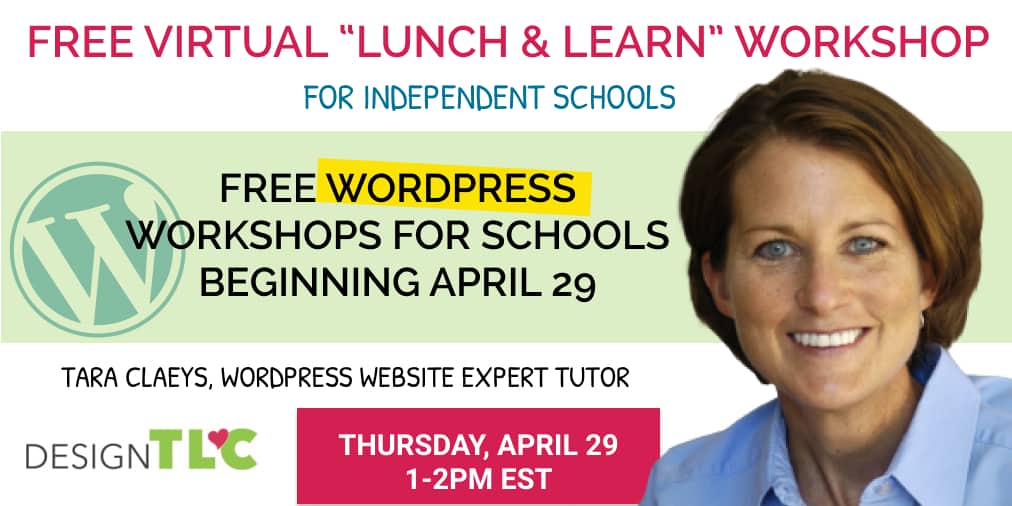SEO copywriting hacks for your school website

It can be frustrating when you spend hours developing content for your school website without seeing any improvements in search rankings, enrollments, etc. If you find yourself in this case, it’s time to dial in on the actual content you’re writing. You could build out your website’s content for days, but none of it could appeal to your audience or pertain to what they are looking for. That’s why it’s important to understand SEO copywriting and how it’s different from standard writing practices. In this article, we’ll go deeper into SEO copywriting and how it can help your school website in search engine rankings.
What is SEO copywriting?
Copywriting in itself is writing that prompts a site visitor to take action, make a purchase, subscribe to a newsletter, etc. It’s a creative science rooted in salesmanship and persuasiveness. A strong copywriter knows what particular audiences need or what they want to hear, and will target their content towards those audiences. To do this, one has to build content with specific high-ranking keywords that will increase engagement and conversions, and decrease bounce-rates. Additionally, a strong copywriter will have in-depth knowledge about SEO and Google’s Ranking Algorithm, basically what Google looks for in website content to put it higher in search rankings.
Elements of copywriting
There are five elements to include in your copywriting that can help your school website in search rankings.
Headline
A good copywriter starts building an attractive headline first. Your headline is the first impression for the reader. If it’s too long or too short, the reader won’t be engaged. If it has nothing to do with the content you’re promoting, it will be unpleasantly surprising for the reader.
David Olgivy states that headlines are read about five times before a reader gets into the body copy. If your headline isn’t engaging enough, the reader won’t bother with the rest of your content. Your headline should be relatively short and concise, and memorable. Research shows that headlines with numbers perform well in Google rankings. When you start ranking in Google’s top ten for whatever keywords your SEO is optimized for, you will start to get organic clicks from readers if your headline is attractive and clickable.
Meta description
Meta description is an SEO must for improving search rankings. For copywriting, it’s just as important. In short, meta descriptions help guide search engines in ranking; they provide short, concise descriptions of what your content is about is the search engines so they know where your website should be ranked. To take advantage of meta descriptions at their full potential, know the buzzwords and keywords in your content, and include them in a 150-160 character meta description that best encapsulates your content.
Keyword frequency
Keyword frequency refers to how many times your preferred keywords are on the webpage. Keywords and their frequency in your content aren’t as effective in SEO as they used to be, thanks to Google’s updates, but they are still important elements in SEO copywriting. How many times to use a keyword is a delicate balance; using the keyword too many times in a short piece of content could appear as keyword stuffing and come off as spammy to readers.
Storytelling
Despite the sometimes formulaic processes that come with optimizing content for SEO, remember you’re still selling a story to your readers. Your goal is to get families to enroll with your school, engage with your website, sign up for a tour, etc. It’s impossible to succeed at these things with boring copywriting. Make sure the copy on your website tells the stories of students, faculty, community members, or anyone who has been impacted by your school. Humans are naturally attracted to storytelling, so including this element in your SEO copywriting will organically improve your search rankings, bounce rates, and conversions.
Page links
Links (internal and external) are the building blocks of any webpage. Though we tend to link internally to improve our own SEO and increase clicks on other pages on our websites, it’s important to include external links in our content too. Linking to other webpages shows readers that research was completed in order to publish this content, and that you value the research and opinions of others enough to include it in your own content. Understanding your audiences is key for this, because you will already know what bits of content they probably want in-depth information on.
Easy to implement copywriting hacks
Now that we’ve covered the key elements of copywriting for SEO, let’s get into some easy to use hacks and tips that will take your copywriting game to the next level.
Plug in hooks
No one is engaged in any writing that is boring upfront. Engage your readers quickly with a statistic, fun fact, or a question. Asking readers a relevant question that relates to your content is a surefire way of getting them interested in what you have to say, especially if they don’t even know what questions they need to be asking. Some popular ones relating to small schools are:
- “Are your children disengaged with their coursework?”
- “Are you looking for a unique, one-of-a-kind learning experience for your child?”
- “If you don’t know what you’re looking for in a preschool, how can you ensure you’re making the right choice?”
You can also ask more general questions like:
- “Have you ever thought about it this way?”
- “What could be better than this?”
- “Could this be easier?”
Statistics about children’s response to virtual learning, engagement rates, performance in private schools or your particular learning model, and mental health are all great statistics to use as hooks in your content.
Use the Bridge Model
The Bridge Model is a helpful tool in persuasive copywriting because it shows the desired reality, then the issues preventing that reality. Then, the copy offers the perfect solution to their problems. Once you offer a solution to their problems, the readers are more engaged and more likely to continue reading. Have your reader picture a desired reality, like their child happily enrolled in a school that fits their needs. Then show them the sometimes confusing process of applying and enrollment. Once you offer the concerns with their desired reality, readers are actively searching for a solution. This is when you explain how you can fix their problems.
Lead with your best content
Only about 30% of Internet readers will sit and read an entire article through the end. Since this is such a small percentage, you need to adjust your copywriting to fit the attention span of most people on the Internet. Forget everything you learned in school where you focus the first 50% of your writing building up to the main content.
Internet skimmers and school families don’t have time to dig through your content to find the main message. To save them time and frustration, put your most important information at the top of your content. If readers are interested in what they see, they’ll most likely continue to scroll and finish reading the content.
Use Open Loops
Using reader psychology is a solid way to engage readers for the entirety of your content. All humans have one psychological trait in common: when we read an open sentence…
… we read further to close it. This is true in all humans, we wonder “what happens next?” and continue searching for the right answer. This can be applied to copywriting by stating pieces of information they’re looking for at the beginning, then answering their questions much later in the content, so readers have to continue to read or scroll through to answer their questions.
Use words that tap into emotions
Power words are crucial in copywriting. Since your goal with SEO is to be clear, concise, and memorable, power words that incite emotion are your ticket to success. You can use them in headlines, subtitles, tags, introductions, body copy, calls to action, etc. Their main goal is to pack a punch and create an emotional response in readers so they want to act. Some categories of power words can be:
- Happy
- Sad
- Beautiful
- Angry
- Excited
- Greedy
- Motivational
- Curious
- Inspiring
Say more with less
You don’t need 3,000 words to get your main point across to readers. As stated above, you should aim to be concise but memorable in your copywriting. Fluffy, long form copywriting is beautiful, but won’t help your SEO efforts. For SEO, your copywriting can be short, and just as impactful as a longform article. To do this, use power words, keywords, and both the Bridge Model and Open Loops to engage the reader quickly. Once the reader is engaged, make sure your content is easy to understand (usually kept around a 6th-grade reading level for accessibility) and there is a clear call to action that helps readers take the next step.
Want to learn more?

Join us Thursday, April 29, for the first FREE Lunch & Learn session in our WordPress Workshop series. From1-2pm, we’ll be discussing SEO on your school website, from general SEO topics to specific WordPress SEO plugins. Register for the Lunch & Learn today!